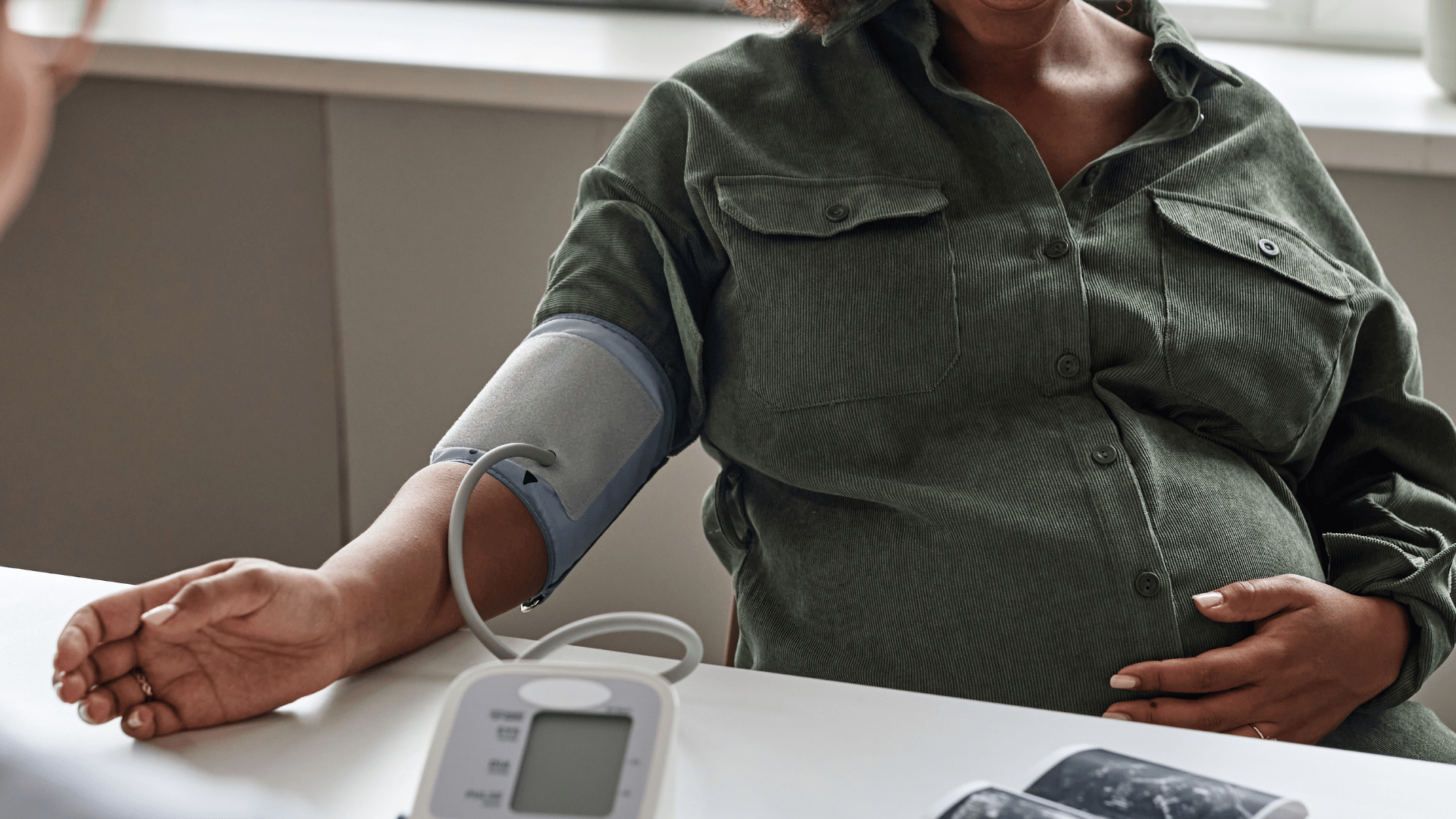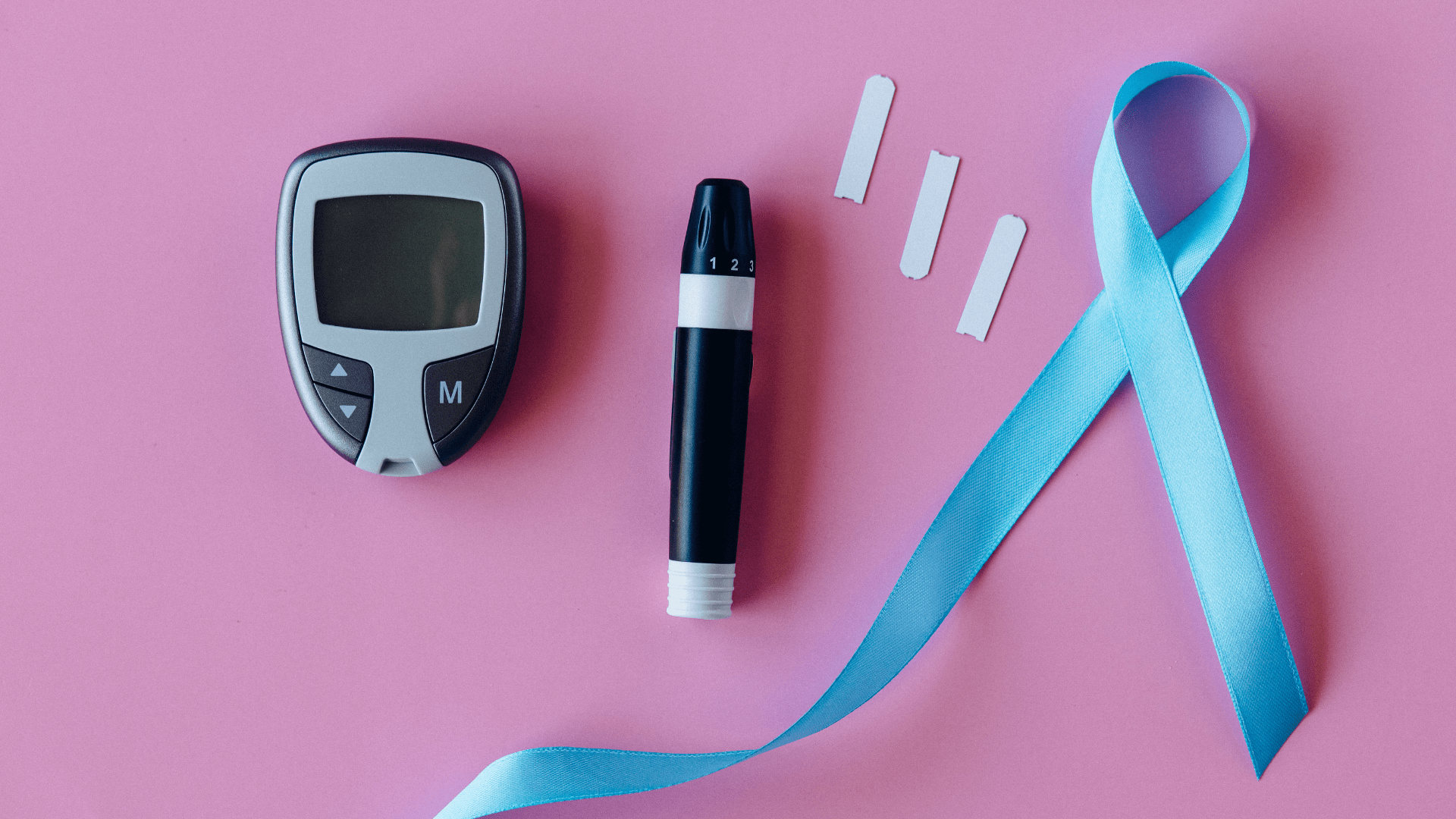Pregnancy is often described as beautiful (and it is!). The anticipation of bringing a whole human into the world, the baby showers, and decorating the baby’s room can be a lovely experience.
However, just like anything real, there is the not-so-beautiful side. Between the back aches, the odd cravings at random times, and waking up to urinate countless times, your body is working overtime to keep the 2 hearts (or more) beating in one body.
While every pregnancy IS different, there could be some sinister health bumps along the way that make the journey not so smooth. Two of the most common pregnancy complications are preeclampsia and gestational diabetes.
If you’ve ever heard any of these terms and thought, “What is that?”, if you have experienced any of them before, but came out with no clarity, or if you’re just a pregnant mama, then this article is for you. We’re going to break down these pregnancy complications, their risks, and how to prevent them, to help protect yourself and your baby.
What Is Preeclampsia?

Preeclampsia is a serious medical condition that shows up in the 2nd trimester of pregnancy, usually after 20 weeks (and even a few weeks after pregnancy). It is due to increased blood pressure and can affect different organs in the body.
Here’s the plot twist — it actually shows up in women who have never had blood pressure problems before!
The exact cause isn’t known, but science has revealed some theories as to why this happens. One major theory? It all starts with the placenta – the organ that feeds and supports the baby 24/7 in the womb.
In the early stages of pregnancy, the placenta is supposed to form healthy and flexible blood vessels that can handle the back-and-forth blood flow between you and your baby. In preeclampsia, it is believed that these blood vessels do not develop properly, and they could be narrower and less efficient, which affects how blood and oxygen get to the baby.
The poor blood flow sets off alarm systems in the body, which send it into overdrive, kind of like a mama-bear trying to protect her baby. Sounds heroic, right? It is, but like many superhero movies, the effects on the host aren’t so great. One of these effects is that the body turns the pressure up (literally), which happens as blood struggles to flow through these narrow and stiff vessels.
The body reacts, but the side effects are not so great.
Who Is at Risk of Preeclampsia?
Preeclampsia can happen to anyone, but the chances are higher if you:
- Had a previous pregnancy with preeclampsia.
- Are pregnant with twins or more.
- Have autoimmune conditions like lupus.
- Have diabetes or gestational diabetes.
- Have kidney disorders.
- Are pregnant for the first time.
- Are younger than 20 or 35 years and older.
- Have a family history of preeclampsia (in a first-degree relative like your mother).
What Are the Signs and Symptoms of Preeclampsia?
The thing about preeclampsia is that it can sneak in like a thief in the night. Some women have symptoms, others do not. Here are some general things to look out for:
- High blood pressure, from 140/90 mmHg (on 2 measurements at least 4 hours apart) or 160/110 mmHg (at least 2 measurements).
- Protein in the urine detected during tests — this means that your kidneys might be under stress.
- Sudden, rapid, or severe swelling in the face, hands, or feet.
- Persistent headaches that don’t go away with usual medications.
- Sudden weight gain.
- Changes in vision, like blurry vision, seeing spots, or sensitivity to light.
- Pain in the upper abdomen.
- Nausea or vomiting, especially later in pregnancy
- Difficulty breathing.
- Urinating less than usual.
You don’t have to check all the boxes. Having one or two of these symptoms is enough of a red flag for your doctor to investigate further.
Why Does It Matter?
Preeclampsia is one of the leading causes of complications for both the mother and the baby. If not managed properly, it can lead to serious complications like:
- Eclampsia: This means seizures, and it’s a life-threatening emergency.
- Damage to organs like the liver, kidneys, or the brain.
- Stroke
- Coma
- Placental abruptio: When the placenta separates from the wall of the womb before delivery.
- Preterm birth
- Poor growth of the baby.
- In some cases, sadly, it can also lead to the death of the mother, the baby, or both.
There is a silver lining: preeclampsia is treatable, especially when caught early. Sometimes, doctors may recommend early delivery if it becomes too risky. This is why antenatal check-ups are very crucial, and you should never skip them even if you feel “fine”.
What Is Gestational Diabetes?

Gestational Diabetes Mellitus (GDM) is a form of glucose intolerance that shows up for the first time during pregnancy. “Glucose intolerance” might sound like fancy medical speak, but it basically means your body has trouble managing sugar in your blood. This is because, during pregnancy, your body produces extra hormones, which can make it harder for insulin — the hormone that helps keep your blood sugar in check — to do its job properly.
Unlike other types of diabetes, gestational diabetes usually goes away after you give birth, but it doesn’t change the fact that it can cause serious problems for both the mother and the baby.
Who Is at Risk of Gestational Diabetes?
You might be more likely to have GDM if you:
- Have had GDM in a previous pregnancy
- Are pregnant with twins or more
- Are overweight or obese before pregnancy
- Have a family history of type 2 diabetes in a first-degree relative (like your mother or a sibling)
- Have had a baby who weighed more than 4 kg.
- Have Polycystic Ovarian Syndrome (PCOS) or other Insulin resistance conditions.
What Are the Signs and Symptoms of Gestational Diabetes?
Gestational diabetes is also in the same sneaky club as preeclampsia. It can tiptoe in and catch you off guard, and research has shown that many women don’t even notice any symptoms at all! But here are some general things to be on the lookout for:
- Feeling extra thirsty, like you just ran a marathon even though you didn’t
- Urinating large volumes and more frequently than usual
- Feeling hungrier than usual
- Feeling tired for no good reason.
- Sometimes, blurred vision or headaches might pop in.
- Sugar in your urine, picked up on urine tests.
Since most pregnant women do not experience these symptoms, screening is done at 24-28 weeks or even earlier at their first antenatal visit, if they have risk factors.
Why Does It Matter?
If GDM is not caught or managed early, it can cause some complications for both the mother and the baby. Some of these include:
- Having a larger baby (foetal macrosomia), which can make delivery complicated and lead to birth injuries.
- Preterm labour.
- Low blood sugar in the baby after birth.
- Breathing difficulties in the baby after birth.
- Higher risk of developing type 2 diabetes mellitus later in life in both the mother and the baby.
- Increased risk of developing preeclampsia in the mother.
- Possible urinary tract infections in the mother.
How Can You Prevent Pregnancy Complications?
There are many smart steps you can take to help prevent some of these pregnancy complications. They include:
- Regular antenatal check-ups. We sound like a broken record at this point, but it is extremely important that you don’t miss any appointment, even if you feel fine.
- Eating a balanced and nutritious diet.
- Maintain a healthy weight before and during pregnancy.
- Manage any pre-existing conditions like diabetes, high blood pressure, or autoimmune conditions.
- Avoid smoking and alcohol.
- Share your family history with your doctor to help plan accordingly.
Final Thoughts
Pregnancy can throw some unexpected curveballs, but knowing what to look out for can help you dodge them or even stay ahead. Ensure you don’t miss your check-ups, listen to your body, and don’t hesitate to ask questions.
Staying informed is key. The sooner we detect these conditions, the easier they are to manage and the safer you and your baby will be. Share this article with your friend or loved one who is expecting.
References
Preeclampsia and Eclampsia – Gynecology and Obstetrics – MSD Manual Professional Edition
Preeclampsia – StatPearls – NCBI Bookshelf
Preeclampsia: Background, Pathophysiology, Etiology
Diabetes Mellitus in Pregnancy – Gynecology and Obstetrics – MSD Manual Professional Edition




